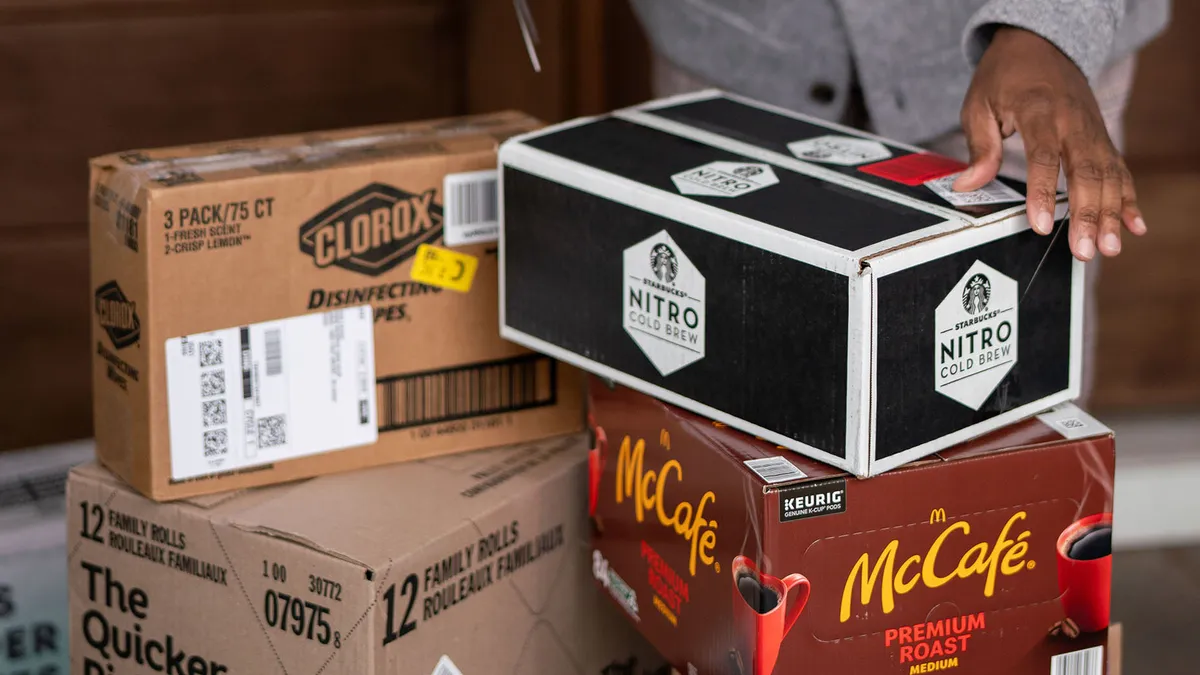Daniel Sokolovsky is the CEO and Co-Founder of logistics solutions company Warp. All opinions are the author’s own.
Venture capital dollars are scarce and mergers and acquisitions are on the rise, and for good reason.
Vertical and horizontal integration stand as pivotal strategies for companies navigating the complexities of the supply chain industry and hoping to grow. In the dynamic landscape of modern commerce, the ability to streamline operations and enhance overall efficiency is paramount.
By combining these two strategies, companies can achieve a delicate balance between control and flexibility, positioning themselves strategically in the supply chain to adapt swiftly to market changes, reduce costs and ultimately thrive in an ever-evolving business environment.
A good example of horizontal integration would be Misfits Market’s acquisition of Imperfect Foods. After the pandemic highs of grocery delivery began to decrease, Misfits made the strategic decision to invest in Imperfect, leveraging their assets and supply chain to lower the delivery costs passed onto consumers while growing market share.
Vertical integration, on the other hand, can provide increased control, reduced costs or improved margins. When American Eagle purchased Quiet Logistics 2021, the retailer hoped to better control its supply chain while serving as a third-party logistics provider to amass the volume needed to ship products fast and cost efficiently.
According to research by Deloitte, supply chain synergies account for more than half of announced deals. Consumer and industrial products industry account for the highest percentage of synergies at 50% to 60%. According to the research, the top material and cost synergies include rapid supplier contract negotiations, strategic sourcing, carrier consolidation, design cost and manufacturing, and SKU rationalization.
Partnerships, integrated technology and M&A will certainly play a key role in how businesses handle inflation and sales during times of economic uncertainty. Here are three examples of the advantages of horizontal and vertical integration in the supply chain:
Leveraging volume and assets
For years, funding poured into asset-less, technology-forward logistics startups promising faster and better on-time delivery through software. But having owned assets like warehouses, fulfillment centers, or even trucks gives companies the greatest level of control over their supply chain.
Retailers have also come to realize that even with the downturn in the economy, they can easily integrate new technology, maximizing their physical investment by acting as a third-party logistics provider for other brands. They can continue to move their own products, keep fast and cost-efficient delivery promises while adding an additional income stream from outside brands.
Faster technology upgrades
In today's fast-paced world of e-commerce and global distribution, businesses are constantly seeking innovative ways to streamline their supply chain operations. In May 2023, the Ingka Group, the largest owner and operator of Ikea stores, announced that it acquired Made4net, a U.S.-based supply chain software provider that designs automated warehouse systems to improve its order fulfillment landscape.
Order fulfillment and a cutting edge supply chain is really what keeps the lights on at Ikea. Precision in handling and packing products is crucial, and automated warehouse systems equal fewer fulfillment errors, leading to higher customer loyalty and trust.
Building the technology from scratch would have taken Ikea many years, but by expanding horizontally, they’ve been able to keep their market share while meeting consumers expectations. Companies that don’t have the bandwidth or dollars to fully acquire a company should consider plug and play technology that serves the same purpose.
Operational efficiencies
In the food delivery industry, Wonder, the fast-growing virtual food hall company, announced it would be acquiring meal kit company Blue Apron in September 2023 with the goal of creating a digital platform for mealtime.
The news follows a year of meal kit consolidation in a competitive food delivery industry. Consolidating shipments allows companies to take advantage of economies of scale. Larger shipments typically result in lower transportation costs per unit as carriers can optimize routes and utilize available space more efficiently.
So what does the future look like for brands looking to provide fast and cost-effective shipping? According to Capstone Partners, the lack of funding headed towards early-stage logistics startups is almost certainly going to result in more horizontal and vertical integration.
Meanwhile, the U.S. Census Bureau reported that e-commerce growth has declined from its peak of 16.5% of retail sales in Q2 2020 to 15.6% in the third quarter of 2023. Although it’s still above pre-pandemic levels of 12%, it’s obvious that any retailer that operates in a multichannel environment needs to think more strategically about how to stay afloat as shipping volumes decrease.













